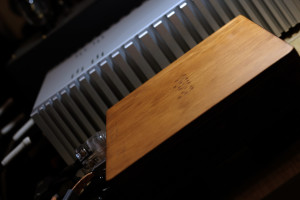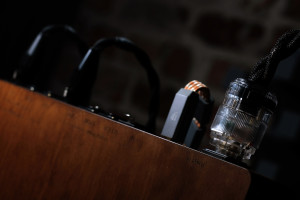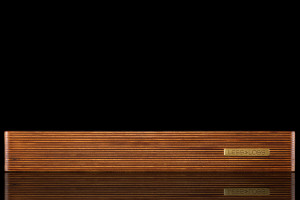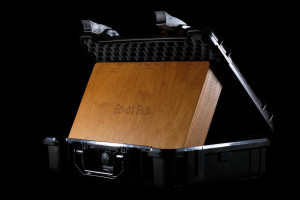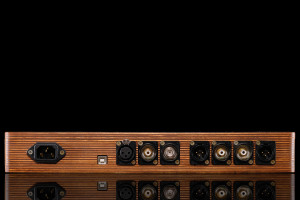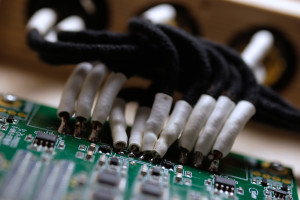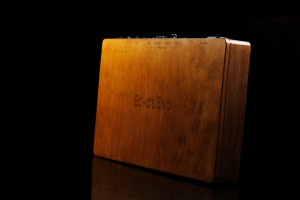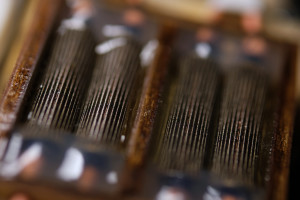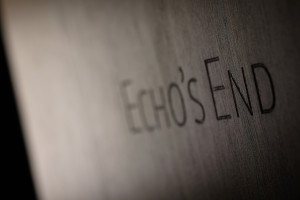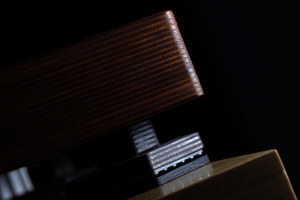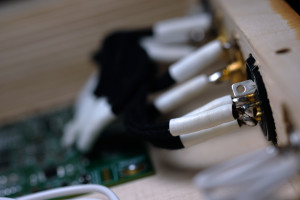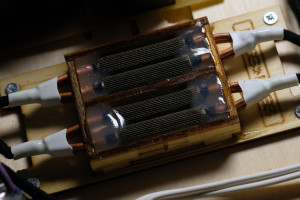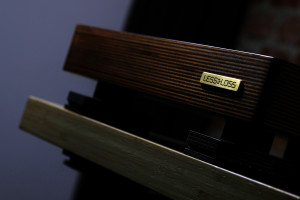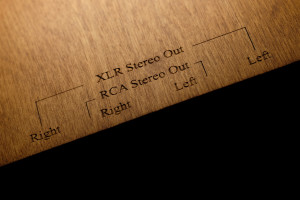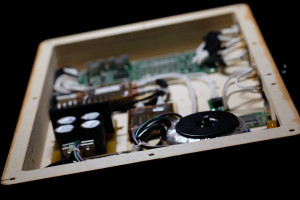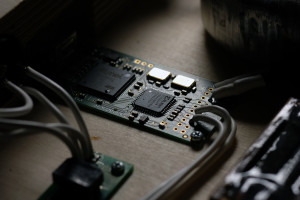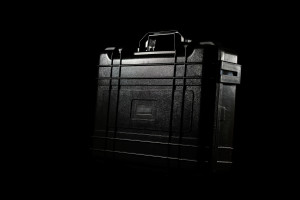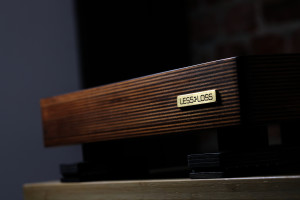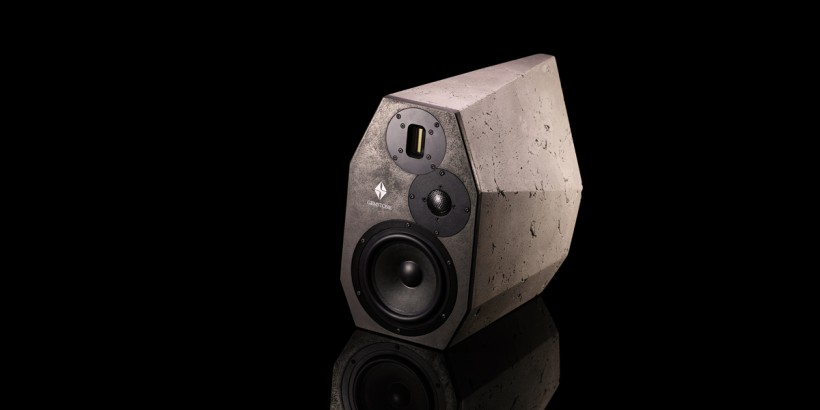DACs can be very complicated multi-tasking machines, loaded with streamers, volume control modules, numerous filters and even more than one output circuit. Such hardware these days oftentimes simply is aimed to functionally please as many people as possible, on the contrary to this review’s hero – LessLoss Echo’s End Original DAC – purposely designed to be as minimalist and simple as possible. Enjoy!
Introduction
Early on it’s quite justified to see LessLoss as an audio house primarily focused on cables, its portfolio is full of such goods after all, however this very popular branch of the industry is anything but easy. Dozens of alike profiled operations emerge each year to try their luck, though vast majority of them won’t ever go beyond hobbyist DIY activities to eventually flourish into proper businesses, that’s the harsh reality. Today’s establishment has been afloat for two decades and is doing well, which is quite the achievement considering the competition as numerous as it’s merciless. Prior to my first LessLoss assignment just over a year ago, I had figured this Lithuanian team had to have something truly special going on, otherwise it wouldn’t have survived in the hostile audio environment this long. Two of its C-MARC power cables quickly scored off my previous reference cords, shortly after the loudspeaker specimen from the same range followed accordingly, and just recently the upper echelon C-MARC-infused Boenicke Audio S3 turned my cable worldview upside down yet again. However, all LessLoss cables are just one way of expressing what this company truly does. Its body of work, as holistic as it is foundational, narrows down to noise reduction on multiple fields; signal and power transmission plus mechanical and electrical grounding.
Prior to my first LessLoss assignment just over a year ago, I had figured this Lithuanian team had to have something truly special going on, otherwise it wouldn’t have survived in the hostile audio environment this long. Two of its C-MARC power cables quickly scored off my previous reference cords, shortly after the loudspeaker specimen from the same range followed accordingly, and just recently the upper echelon C-MARC-infused Boenicke Audio S3 turned my cable worldview upside down yet again. However, all LessLoss cables are just one way of expressing what this company truly does. Its body of work, as holistic as it is foundational, narrows down to noise reduction on multiple fields; signal and power transmission plus mechanical and electrical grounding. Several C-MARC cables proved to be a gateway to the LessLoss realm, but there was more still to come. Proof of a broader gateway arrived in the form of three C-MARC Firewall 64X modules. These inconspicuous boxes not only did splendidly at my place, but also clearly pushed the envelope further in the same sonic direction as C-MARCs. Put shortly, this trio tackled the same fundamental noise issue, yet did so via entirely different passive filtering measures. All evidence collected thus far indicates that team LessLoss truly has the silencing game down pat, but today’s full-sized D/A converter – LessLoss Echo’s End Original – is something far different. It was sent my way to demonstrate the result of all the Lithuanian noise-killing tech applied not via external additives, but integrated into a ready-made audio device.
Several C-MARC cables proved to be a gateway to the LessLoss realm, but there was more still to come. Proof of a broader gateway arrived in the form of three C-MARC Firewall 64X modules. These inconspicuous boxes not only did splendidly at my place, but also clearly pushed the envelope further in the same sonic direction as C-MARCs. Put shortly, this trio tackled the same fundamental noise issue, yet did so via entirely different passive filtering measures. All evidence collected thus far indicates that team LessLoss truly has the silencing game down pat, but today’s full-sized D/A converter – LessLoss Echo’s End Original – is something far different. It was sent my way to demonstrate the result of all the Lithuanian noise-killing tech applied not via external additives, but integrated into a ready-made audio device.
Build
The shipment arrived inside a cardboard box, thus I found a first layer of usual packaging materials including foam fillers, bubble wrap and the lot. But, deeper inside, was revealed a quality flight case instead. Upon opening it, I discovered the perfectly secured main enclosure of the device, absent accessories deemed as standard issue for such products. No power cord, no manual, nor a remote control were included. Nothing but the DAC itself. Early on I assumed that these were mistakenly missing, but they weren’t and soon I learnt why.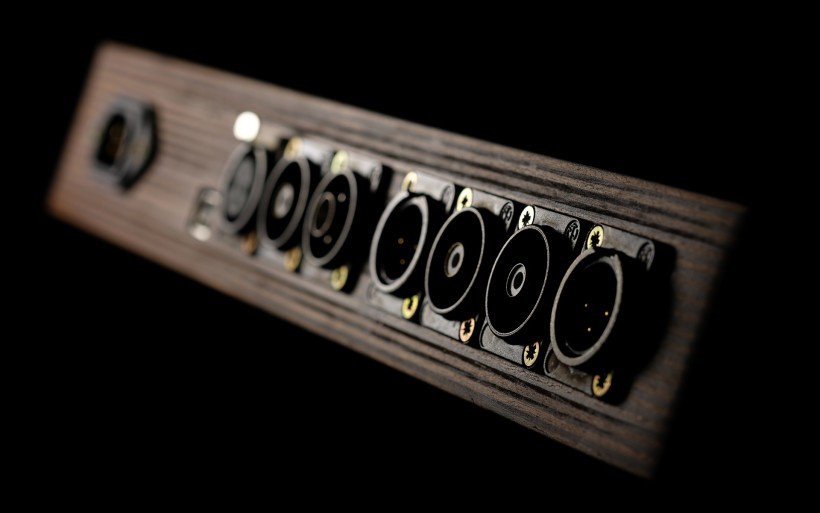 LessLoss Echo’s End is many things, but surely not a regular DAC. If I had to point my finger at the most minimalist hassle-free machine of this particular sort, today’s would be my easy top pick with no afterthoughts. It measures (WxDxH) 375 x 230 x 55mm and weighs about three kilograms, which is next to nothing once its full-sized frame is taken into account. Listed figures make the Echo’s End a breeze to carry and its nice flight case actually makes it all the more so. The product accepts up to 24bit/192kHz PCM and double-rate DSD (via USB), that’s it. Should you need MQA and/or quad/octuple-rate DSD, you’d be better off elsewhere. Personally I couldn’t care less, my music collection in about 95% consists of RedBooks.
LessLoss Echo’s End is many things, but surely not a regular DAC. If I had to point my finger at the most minimalist hassle-free machine of this particular sort, today’s would be my easy top pick with no afterthoughts. It measures (WxDxH) 375 x 230 x 55mm and weighs about three kilograms, which is next to nothing once its full-sized frame is taken into account. Listed figures make the Echo’s End a breeze to carry and its nice flight case actually makes it all the more so. The product accepts up to 24bit/192kHz PCM and double-rate DSD (via USB), that’s it. Should you need MQA and/or quad/octuple-rate DSD, you’d be better off elsewhere. Personally I couldn’t care less, my music collection in about 95% consists of RedBooks.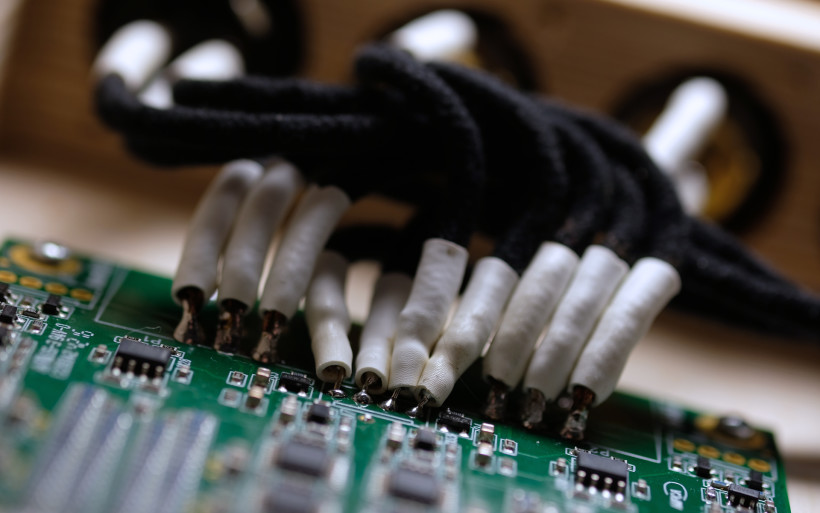 LessLoss Echo’s End’s entire enclosure is made of Plywood layers seamlessly glued together. The first thing one notices is the lack of any switches, knobs, LEDs and alike. Heck, even the main on/off button isn’t there. The only additive ornament found on the product is its own name nicely carved on top plus petite manufacturer’s brass logo on the front, that’s it. Team LessLoss clearly pushed towards not only visual, but also operational minimalism. Once powered, Echo’s End remains engaged and ready for input. On its rear there’s the main IEC inlet, four digital auto-sensing inputs (USB, AES/EBU, coaxial S/PDIF and BNC) and two stereo pairs of line level outputs; RCA (1.4Vrms) and XLR (2Vrms). The machine arrived without any feet, not even the tiniest rubber pucks were included in the package and that’s by design. My loaner was sent along with LessLoss’ own Bindbreaker feet sold separately, thus was tested with them underneath it. These decouplers deserve a standalone publication so for now we’ll skip ’em completely.
LessLoss Echo’s End’s entire enclosure is made of Plywood layers seamlessly glued together. The first thing one notices is the lack of any switches, knobs, LEDs and alike. Heck, even the main on/off button isn’t there. The only additive ornament found on the product is its own name nicely carved on top plus petite manufacturer’s brass logo on the front, that’s it. Team LessLoss clearly pushed towards not only visual, but also operational minimalism. Once powered, Echo’s End remains engaged and ready for input. On its rear there’s the main IEC inlet, four digital auto-sensing inputs (USB, AES/EBU, coaxial S/PDIF and BNC) and two stereo pairs of line level outputs; RCA (1.4Vrms) and XLR (2Vrms). The machine arrived without any feet, not even the tiniest rubber pucks were included in the package and that’s by design. My loaner was sent along with LessLoss’ own Bindbreaker feet sold separately, thus was tested with them underneath it. These decouplers deserve a standalone publication so for now we’ll skip ’em completely.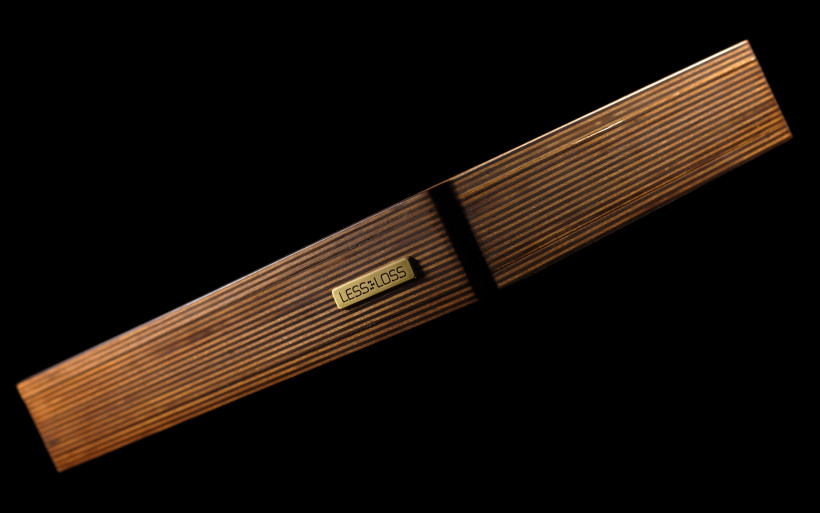 I wanted to gain access to the innards to photograph them, so in order to open up the product, I removed several screws found on its underbelly. Once that was done, its top cover went off to reveal very unusual innards. The internal PSU based on a small toroidal transformer plus a separate stabilization circuit board weren’t an unusual sight, ditto the USB receiver by Amanero Technologies. These days multiple d/a converters have it, my reference Pacific DAC included. The conversion ladder board itself by Danish Soekris Industries also wasn’t anything new to this reviewer’s eyes. To judge a book by its cover, all listed elements would then imply that Echo’s End is an OEM affair inside of a wooden dress and that’s that. Well, it’s not.
I wanted to gain access to the innards to photograph them, so in order to open up the product, I removed several screws found on its underbelly. Once that was done, its top cover went off to reveal very unusual innards. The internal PSU based on a small toroidal transformer plus a separate stabilization circuit board weren’t an unusual sight, ditto the USB receiver by Amanero Technologies. These days multiple d/a converters have it, my reference Pacific DAC included. The conversion ladder board itself by Danish Soekris Industries also wasn’t anything new to this reviewer’s eyes. To judge a book by its cover, all listed elements would then imply that Echo’s End is an OEM affair inside of a wooden dress and that’s that. Well, it’s not.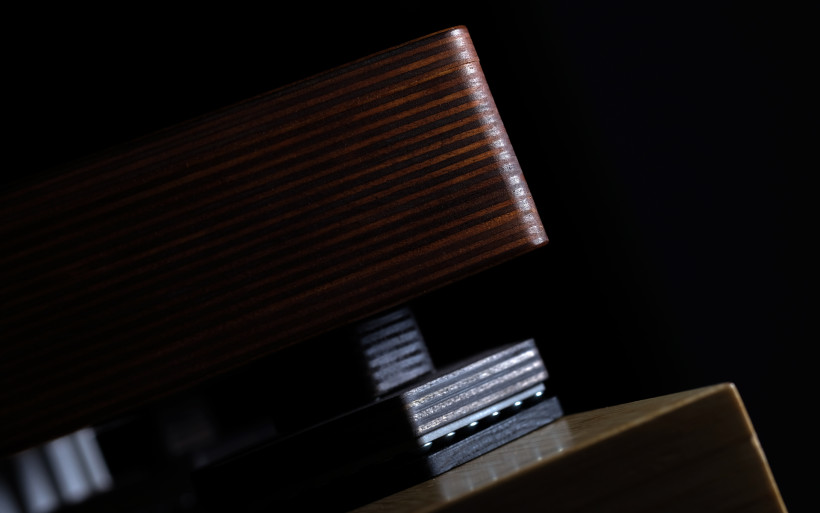 The LessLoss Echo’s End both inside and out is in fact the effect of extensive reduction and silencing treatment performed everywhere possible, plus careful component and material selection. The LessLoss portfolio incorporates several firm principles and to understand them is to grasp the key concept behind today’s machine. First of all, the Lithuanian designers avoid plastic and if such a material has to be used, it’s either clear or white. All this is seen in i.e. heat shrink tubing inside the Echo’s End and also in LessLoss C-MARC power cords and their plugs. Avoidance of electromagnetic reflections and acoustic resonances explain the wooden enclosures. Mechanical grounding needs to be as fast as it gets, which informs us why today’s specimen is free from rubber feet and any other springy components. Team LessLoss also favours soldering joints over clamping, aims for the lowest resistance possible and pursues high-efficiency designs. I am told that their own power circuitry contains no traces. Beneath the LessLoss board are solid core 4mm2 copper point-to-point connections processed by their newly developed Entropic method, developed for the new Firewall for Loudspeakers product. But there’s more.
The LessLoss Echo’s End both inside and out is in fact the effect of extensive reduction and silencing treatment performed everywhere possible, plus careful component and material selection. The LessLoss portfolio incorporates several firm principles and to understand them is to grasp the key concept behind today’s machine. First of all, the Lithuanian designers avoid plastic and if such a material has to be used, it’s either clear or white. All this is seen in i.e. heat shrink tubing inside the Echo’s End and also in LessLoss C-MARC power cords and their plugs. Avoidance of electromagnetic reflections and acoustic resonances explain the wooden enclosures. Mechanical grounding needs to be as fast as it gets, which informs us why today’s specimen is free from rubber feet and any other springy components. Team LessLoss also favours soldering joints over clamping, aims for the lowest resistance possible and pursues high-efficiency designs. I am told that their own power circuitry contains no traces. Beneath the LessLoss board are solid core 4mm2 copper point-to-point connections processed by their newly developed Entropic method, developed for the new Firewall for Loudspeakers product. But there’s more. The LessLoss Echo’s End is based on Soekris R-2R board for two reasons; sonics and efficiency. If implemented right, this module can be pushed truly far, but most importantly it also creates signal powerful enough to escape without any output stage at all. That’s why in today’s machine there’s nothing in-between its d/a board and line outputs; no tubes, no op-amps, no transformers, not even caps, nothing. Similar design minimalism we can already see in some conceptually similar though far more expensive products by i.e. TotalDAC or MSB. Moving on, this device’s entire internal wiring is LessLoss’ own silent C-MARC, soldered all across the board in the, yup, good ‘ol point-to-point fashion. This operation’s latest gen Firewall modules are strategically located at key junctions of the circuit. Each small ply compartment filled with hardened resin is occupied by two pairs of these filters. All components and sockets are directly fixed to the ply enclosure. My loaner is the basic Echo’s End Original version, but there are two available far costlier siblings; the Reference and the Reference Supreme Edition. Perhaps in the future one of those will be sent my way, which is why we won’t go any deeper into these other models now. Once the day comes, I simply need to have something to write about.
The LessLoss Echo’s End is based on Soekris R-2R board for two reasons; sonics and efficiency. If implemented right, this module can be pushed truly far, but most importantly it also creates signal powerful enough to escape without any output stage at all. That’s why in today’s machine there’s nothing in-between its d/a board and line outputs; no tubes, no op-amps, no transformers, not even caps, nothing. Similar design minimalism we can already see in some conceptually similar though far more expensive products by i.e. TotalDAC or MSB. Moving on, this device’s entire internal wiring is LessLoss’ own silent C-MARC, soldered all across the board in the, yup, good ‘ol point-to-point fashion. This operation’s latest gen Firewall modules are strategically located at key junctions of the circuit. Each small ply compartment filled with hardened resin is occupied by two pairs of these filters. All components and sockets are directly fixed to the ply enclosure. My loaner is the basic Echo’s End Original version, but there are two available far costlier siblings; the Reference and the Reference Supreme Edition. Perhaps in the future one of those will be sent my way, which is why we won’t go any deeper into these other models now. Once the day comes, I simply need to have something to write about. It’s quite clear that in purchasing a LessLoss Echo’s End one doesn’t pay for large number of parts and fancy enclosure, but the exact opposite thing; a basic ply exterior loaded with select components, merged according to non-mainstream principles and generously infused with the latest LessLoss silencing tech. This report’s machine simply isn’t high bling hardware to gush over in front of friends, but a modest looker designed to score high notes primarily on performance and ease of use. Simply put, it was clearly made by people strongly convinced that less is in fact more if done right. What’s left to do now is to find out how all the above translates to sonics.
It’s quite clear that in purchasing a LessLoss Echo’s End one doesn’t pay for large number of parts and fancy enclosure, but the exact opposite thing; a basic ply exterior loaded with select components, merged according to non-mainstream principles and generously infused with the latest LessLoss silencing tech. This report’s machine simply isn’t high bling hardware to gush over in front of friends, but a modest looker designed to score high notes primarily on performance and ease of use. Simply put, it was clearly made by people strongly convinced that less is in fact more if done right. What’s left to do now is to find out how all the above translates to sonics.
Sound
To review the LessLoss Echo’s End, fidata HFAS-S10U handled storage and transport duties, then LampizatOr Pacific DAC (KR Audio T-100/Living Voice 300B + KR Audio 5U4G Ltd. Ed.) took over to pass the signal to Trilogy 925, and then to Cube Audio Nenuphar floorstanders with Boenicke S3 speaker cables in-between. All key components connected via LessLoss C-MARC power cords to the GigaWatt PC-3 SE EVO+ power conditioner, which was then married to the main in-wall outlet via LC-3 EVO cable by the same manufacturer. The Amber-modded Excellence ICs by Audiomica Laboratory linked both DACs and amp. iFi audio’s iGalvanic3.0, micro iUSB3.0 and three Mercury cables all were on duty in-between the Japanese server/streamer/transport and either today’s or the Pacific.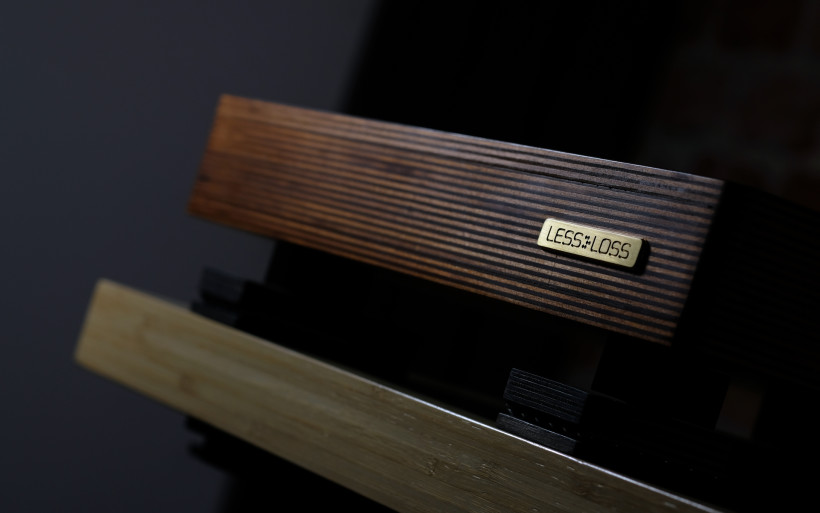 In order to map the Echo’s End’s flavour, naturally this deck had to be compared to my Pacific DAC. To level this skirmish as even-handed as possible, both digital machines fed my Trilogy 925’s RCA inputs exclusively, were connected to my conditioner via the same power cables and occupied the same shelves of my audio rack. Two cable shifts – one USB and one RCA – were all it took to quickly move from one machine to another.
In order to map the Echo’s End’s flavour, naturally this deck had to be compared to my Pacific DAC. To level this skirmish as even-handed as possible, both digital machines fed my Trilogy 925’s RCA inputs exclusively, were connected to my conditioner via the same power cables and occupied the same shelves of my audio rack. Two cable shifts – one USB and one RCA – were all it took to quickly move from one machine to another. Familiarity with several LessLoss items plus a fair share of DACs loaded with R-2R circuits naturally led to mild expectations prior to the first listening session. Pristine black backdrop, pleasant moisture and overall elegance were all expected this time around and the only question was about sonic cost of this attitude. The Echo’s End’s ask is several times lighter versus my reference unit after all. In any case, my educated assumptions turned out to be completely vindicated. Today’s sounded like a product made by the LessLoss operation indeed. It behaved in a very particular way, but at the same time introduced itself in a far different manner than my daily driver.
Familiarity with several LessLoss items plus a fair share of DACs loaded with R-2R circuits naturally led to mild expectations prior to the first listening session. Pristine black backdrop, pleasant moisture and overall elegance were all expected this time around and the only question was about sonic cost of this attitude. The Echo’s End’s ask is several times lighter versus my reference unit after all. In any case, my educated assumptions turned out to be completely vindicated. Today’s sounded like a product made by the LessLoss operation indeed. It behaved in a very particular way, but at the same time introduced itself in a far different manner than my daily driver. In many cases similarities and differences between two compared components don’t happen right away. Usually I truly have to disconnect from surroundings, focus and perform multiple swaps undisturbed before an aural conception firm enough to clearly grasp the revealed differences. To ease this daily journalistic struggle, once in a while tides turn in the exact opposite way. At times two flavours sufficiently distinctive clash to pretty much instantly provide me with all the insight I might need, whereas auditions that follow reassure me in my initial findings and that’s the case today. Echo’s End doesn’t pursue the usual voicing trends but instead it handles music in an unmistakably enchanting way, which well-trained ears will map in a jiffy. It’s a very expressive product, with strong and always present character of its own.
In many cases similarities and differences between two compared components don’t happen right away. Usually I truly have to disconnect from surroundings, focus and perform multiple swaps undisturbed before an aural conception firm enough to clearly grasp the revealed differences. To ease this daily journalistic struggle, once in a while tides turn in the exact opposite way. At times two flavours sufficiently distinctive clash to pretty much instantly provide me with all the insight I might need, whereas auditions that follow reassure me in my initial findings and that’s the case today. Echo’s End doesn’t pursue the usual voicing trends but instead it handles music in an unmistakably enchanting way, which well-trained ears will map in a jiffy. It’s a very expressive product, with strong and always present character of its own.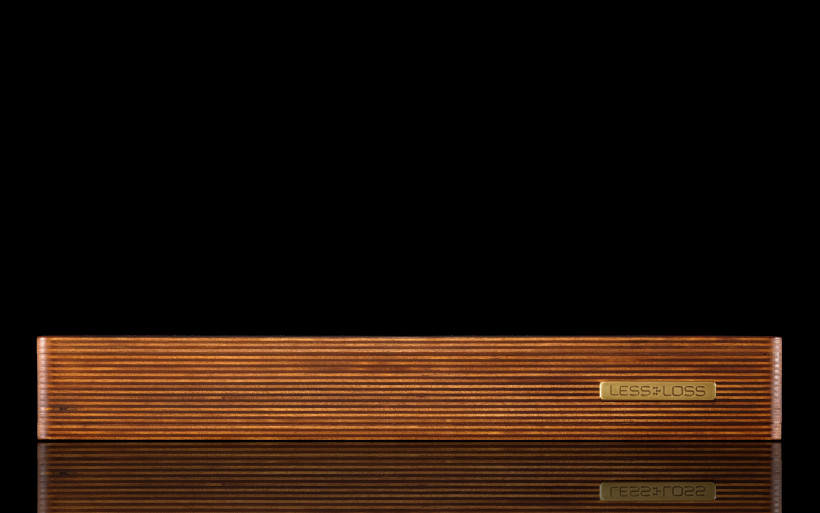 To frame the Echo’s End in an understandable context, it’s best to introduce my reference machine’s attitude yet again. The latter is very fast and direct, capable of magnifying even tiniest particles suspended in air, spatially grand in every direction plus always sensationally present and tonally even, though the result on this count varies from one DHT valve type in its output stage to another. This DAC finely outlines all virtual sound sources, fills them with colour adequate to what’s found on a given recording and is exceptionally resolving on top of that; it hides nothing, shows things as they are with no hesitation. This leads to poorly recorded music presented in a fashion brutal enough for my ears to be selective about its mastering quality. But most importantly, the Pacific provides the perfectly balanced and complete sonic package. It’s quite impossible for me to point my finger at its one specific voicing aspect on sheer quality not up there with the rest. Whilst on duty, this machine always lets me know how good it is.
To frame the Echo’s End in an understandable context, it’s best to introduce my reference machine’s attitude yet again. The latter is very fast and direct, capable of magnifying even tiniest particles suspended in air, spatially grand in every direction plus always sensationally present and tonally even, though the result on this count varies from one DHT valve type in its output stage to another. This DAC finely outlines all virtual sound sources, fills them with colour adequate to what’s found on a given recording and is exceptionally resolving on top of that; it hides nothing, shows things as they are with no hesitation. This leads to poorly recorded music presented in a fashion brutal enough for my ears to be selective about its mastering quality. But most importantly, the Pacific provides the perfectly balanced and complete sonic package. It’s quite impossible for me to point my finger at its one specific voicing aspect on sheer quality not up there with the rest. Whilst on duty, this machine always lets me know how good it is.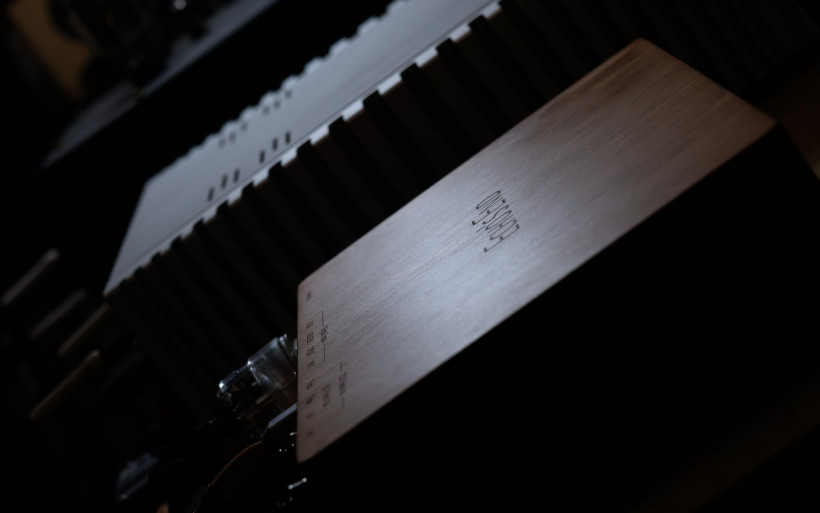 Past the first swap from the Pacific to today’s, the latter in an instant felt more grounded, rounder and clearly milder. This attitude usually also invokes more heft and thicker slower bass, but not this time around, no. Instead the Echo’s End swiftly redirected my attention from resolution and insight to blackness of its background, general politeness, musical tissue and that particular well-known moist sensation, to which my ears always get used to very quickly. Put shortly, key traits from one device to another shifted in a way as clear as it was understandable, but most importantly both cases provided results entertaining enough to leave quality differences outside the door for now. The main takeaway here is lack of any withdrawal symptoms past going from my daily DAC to the LessLoss, which doesn’t happen often.
Past the first swap from the Pacific to today’s, the latter in an instant felt more grounded, rounder and clearly milder. This attitude usually also invokes more heft and thicker slower bass, but not this time around, no. Instead the Echo’s End swiftly redirected my attention from resolution and insight to blackness of its background, general politeness, musical tissue and that particular well-known moist sensation, to which my ears always get used to very quickly. Put shortly, key traits from one device to another shifted in a way as clear as it was understandable, but most importantly both cases provided results entertaining enough to leave quality differences outside the door for now. The main takeaway here is lack of any withdrawal symptoms past going from my daily DAC to the LessLoss, which doesn’t happen often.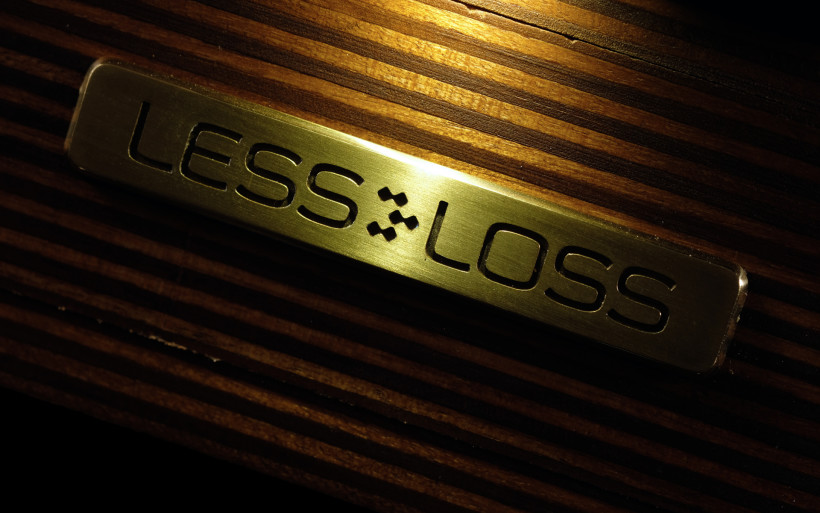 It was explicitly heard that team LessLoss didn’t play the resolution game. They wanted to showcase music as effortlessly and fluently as possible in the first place, which also happens to be today’s key attractor additionally augmented via generously euphonic expressiveness. We could narrow this profile down to quite vinyl-alike charm or relieving freedom from digital tint and harshness. Although these were not present, at the same time careful avoidance of excessive fat and warmth, which would undeniably cover details essential in music, is where the Lithuanians truly got the job done right. Echo’s End simply didn’t sound overly thick, sluggish or bloated, but pleasantly earthy and organic instead. It performed like a vintage top class d/a converter with PCM1704 on-board, albeit with its upper end not trimmed but in perfect check, namely as audible as everything else. That’s why to my ears the Echo’s End introduced no second-grade core flavour in comparison to its far pricier opponent, but something from elsewhere; more substantial and less light-spirited at its core, yet very much appealing on a purely subjective emotional level, enough to provoke the shedding of a proverbial tear or two. This review item’s sound landed in the zone occupied by quality, chic and maturity, not quantity, exposure and abnormal zeal.
It was explicitly heard that team LessLoss didn’t play the resolution game. They wanted to showcase music as effortlessly and fluently as possible in the first place, which also happens to be today’s key attractor additionally augmented via generously euphonic expressiveness. We could narrow this profile down to quite vinyl-alike charm or relieving freedom from digital tint and harshness. Although these were not present, at the same time careful avoidance of excessive fat and warmth, which would undeniably cover details essential in music, is where the Lithuanians truly got the job done right. Echo’s End simply didn’t sound overly thick, sluggish or bloated, but pleasantly earthy and organic instead. It performed like a vintage top class d/a converter with PCM1704 on-board, albeit with its upper end not trimmed but in perfect check, namely as audible as everything else. That’s why to my ears the Echo’s End introduced no second-grade core flavour in comparison to its far pricier opponent, but something from elsewhere; more substantial and less light-spirited at its core, yet very much appealing on a purely subjective emotional level, enough to provoke the shedding of a proverbial tear or two. This review item’s sound landed in the zone occupied by quality, chic and maturity, not quantity, exposure and abnormal zeal.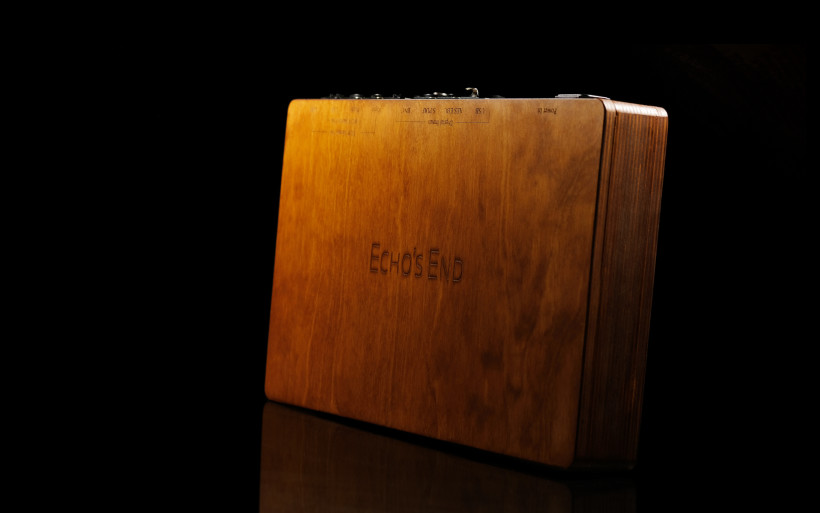 All traits listed above effectively turned LessLoss Echo’s End into a most pleasing product. Its sound came through undeniably effortlessly and never was piercing. It always felt pleasantly gravitational and coherent yet not even once overdone or extreme in any way. At first this product struck me as not quite as revvy and open as my DAC, however the more back and forths between both contestants were under my belt, the more I started to acknowledge that this wasn’t its drawback. Speaking the absolute terms, the Pacific was more agile, open and insightful indeed. Geared to provide the hi-res experience and direct contact with everything on display, it provided vast landscapes and put everything in these perfectly sculpted and served utmost directly. All this tremendously boosted its overall on-stage presence, led to pinpoint accuracy and at times shocking immediacy. The Echo’s End clearly followed a very different path, however its lesser score on speed and magnification didn’t bother me at all. It should, yet it didn’t.
All traits listed above effectively turned LessLoss Echo’s End into a most pleasing product. Its sound came through undeniably effortlessly and never was piercing. It always felt pleasantly gravitational and coherent yet not even once overdone or extreme in any way. At first this product struck me as not quite as revvy and open as my DAC, however the more back and forths between both contestants were under my belt, the more I started to acknowledge that this wasn’t its drawback. Speaking the absolute terms, the Pacific was more agile, open and insightful indeed. Geared to provide the hi-res experience and direct contact with everything on display, it provided vast landscapes and put everything in these perfectly sculpted and served utmost directly. All this tremendously boosted its overall on-stage presence, led to pinpoint accuracy and at times shocking immediacy. The Echo’s End clearly followed a very different path, however its lesser score on speed and magnification didn’t bother me at all. It should, yet it didn’t.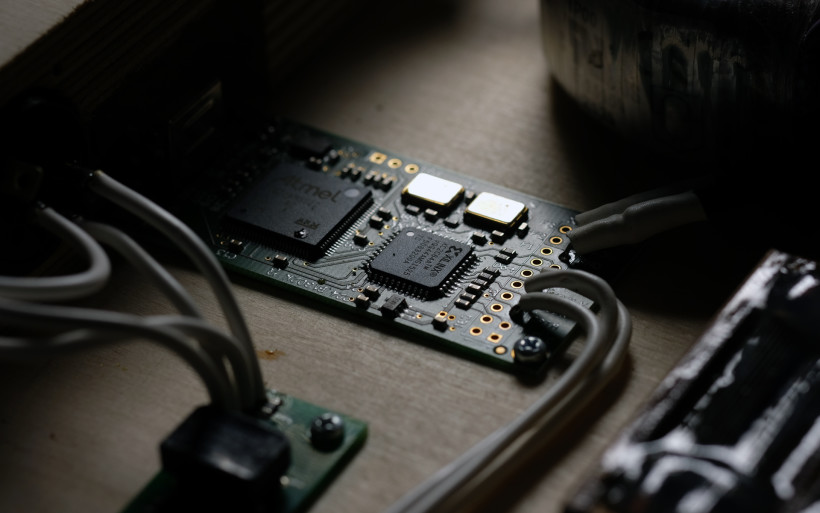 Instead of creating images here and now as closely to my ears as a given track allowed, the Echo’s End had all key virtual sound sources fixed deeper and outlined softer, not quite as visibly distinctive as its opponent though still present. It’s safe to say that I was taken to today’s own enchanted and very much tangible place, but internal calmness and composure in time emerged as two of its greatest traits. Not even once it sounded diluted or fuzzy. Quite the contrary, I’ve found this product’s sound as focused as it was tactile and euphonic. Its agility and wide dynamic contrasts supported traits which elevated expressiveness and charm. My reference machine didn’t reverse this order, but landed more balanced effect. It delivered boldness, prowess, openness and freshness together with vividness, textural complexity and insight. To witness all this served at the same time and on alike quality level is to understand why Pacific is this expensive.
Instead of creating images here and now as closely to my ears as a given track allowed, the Echo’s End had all key virtual sound sources fixed deeper and outlined softer, not quite as visibly distinctive as its opponent though still present. It’s safe to say that I was taken to today’s own enchanted and very much tangible place, but internal calmness and composure in time emerged as two of its greatest traits. Not even once it sounded diluted or fuzzy. Quite the contrary, I’ve found this product’s sound as focused as it was tactile and euphonic. Its agility and wide dynamic contrasts supported traits which elevated expressiveness and charm. My reference machine didn’t reverse this order, but landed more balanced effect. It delivered boldness, prowess, openness and freshness together with vividness, textural complexity and insight. To witness all this served at the same time and on alike quality level is to understand why Pacific is this expensive. Speaking speakers and bass, the Pacific would be a top shelf OB case capable of generating big and enormously springy sound waves, whereas the LessLoss would disguise as a more civilized yet also very potent specimen along the lines of Boenicke W8. Today’s bass I’ve found quite comparable to these Swiss floorstanders properly amplified; internally focused, fabulously elastic, texturally very generous, admirably deep and upon demand capable of hitting like a truck with no apologies involved. Put shortly, on this count Echo’s End isn’t as powerful, direct and outlined as the Pacific, but respectably muscular, coherent and tight nonetheless.
Speaking speakers and bass, the Pacific would be a top shelf OB case capable of generating big and enormously springy sound waves, whereas the LessLoss would disguise as a more civilized yet also very potent specimen along the lines of Boenicke W8. Today’s bass I’ve found quite comparable to these Swiss floorstanders properly amplified; internally focused, fabulously elastic, texturally very generous, admirably deep and upon demand capable of hitting like a truck with no apologies involved. Put shortly, on this count Echo’s End isn’t as powerful, direct and outlined as the Pacific, but respectably muscular, coherent and tight nonetheless.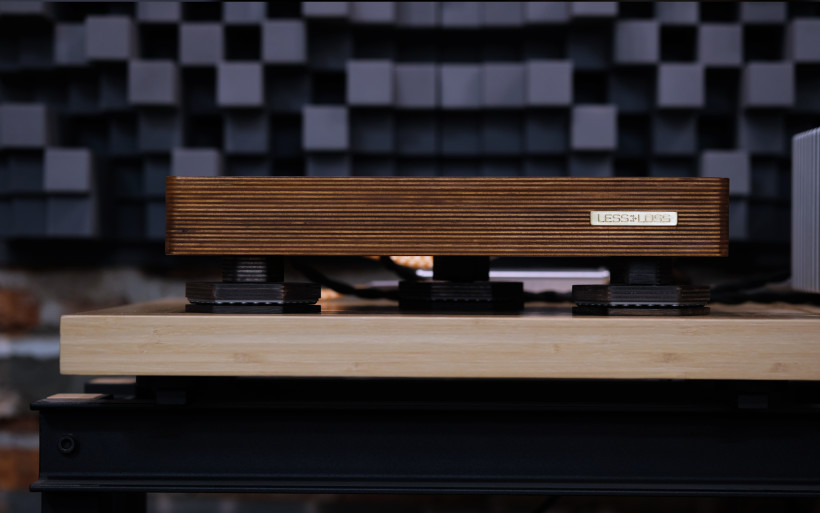 The more LessLoss Echo’s End was on the job, the more it struck me as voiced similarly to my 925 integrated. Both sing out as equally fetching, dark, substantial, smooth, saturated, easily digestible and elegant in fashion. But in spite of these similar core traits, the Lithuanian gave away some of the 925’s heft and warmth to gain more points on organics, openness and speed in return. In fact it’d be quite accurate to put this DAC somewhere in-between the 925 and its two-piece siblings; 993 and 903. In this context the Pacific would be marked as the far pricier 915R and 995R combo also by Trilogy. This rough sketch is quite helpful in knowing where today’s item and its sparring partner landed, but also an oversimplification. It misses the big picture.
The more LessLoss Echo’s End was on the job, the more it struck me as voiced similarly to my 925 integrated. Both sing out as equally fetching, dark, substantial, smooth, saturated, easily digestible and elegant in fashion. But in spite of these similar core traits, the Lithuanian gave away some of the 925’s heft and warmth to gain more points on organics, openness and speed in return. In fact it’d be quite accurate to put this DAC somewhere in-between the 925 and its two-piece siblings; 993 and 903. In this context the Pacific would be marked as the far pricier 915R and 995R combo also by Trilogy. This rough sketch is quite helpful in knowing where today’s item and its sparring partner landed, but also an oversimplification. It misses the big picture.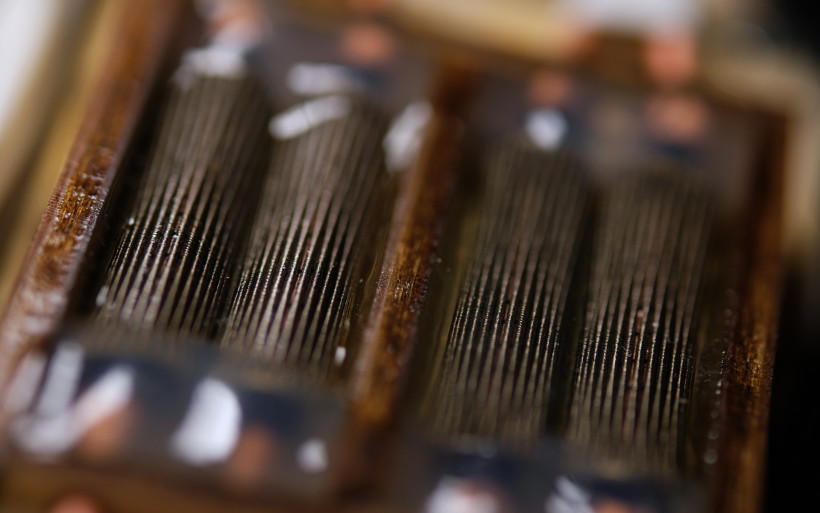 Speaking formats, it’s tempting to label my reference d/a converter as a PCM case with several twists, and today’s as a typical DSD representative. Music served the latter way tends to sound less chiseled, aggressive and digital, but more moist, sweet, mild and tactile instead. It puts joy boosters before measures aimed to extract and display everything as clearly as it can be. That’s what Echo’s End is about, with this machine one’s focus will be on qualities related to pleasant undisturbed music flow and not its informational load. Such voicing my ears have found tasteful and yours might as well, should your taste in sound presented in an organic way be a priority.
Speaking formats, it’s tempting to label my reference d/a converter as a PCM case with several twists, and today’s as a typical DSD representative. Music served the latter way tends to sound less chiseled, aggressive and digital, but more moist, sweet, mild and tactile instead. It puts joy boosters before measures aimed to extract and display everything as clearly as it can be. That’s what Echo’s End is about, with this machine one’s focus will be on qualities related to pleasant undisturbed music flow and not its informational load. Such voicing my ears have found tasteful and yours might as well, should your taste in sound presented in an organic way be a priority.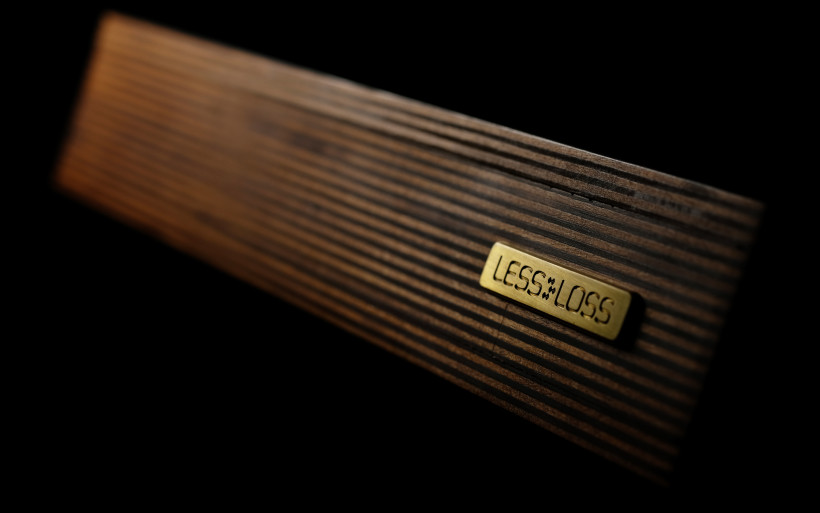 Right from the get-go LessLoss Echo’s End introduced itself as a great performer for the coin, but in time it flourished into a major overachiever, that’s the key takeaway. I would not change a single thing in this machine’s voicing. Never had I the urge to actually ponder about any potential sonic improvements. Not even once. I’ve found it simply too vivid, seasoned, coherent and pleasant to bother. Each time the Echo’s End was on, I was instantly immersed in its reality and always had a blast, whereas its inherently forgiving approach towards repertoire of lesser quality enabled struggle-free ventures beyond my usual musical diet. If after switching from a product five times as costly – that would be my DAC – all this remained, then that’s pretty much all there is to be said.
Right from the get-go LessLoss Echo’s End introduced itself as a great performer for the coin, but in time it flourished into a major overachiever, that’s the key takeaway. I would not change a single thing in this machine’s voicing. Never had I the urge to actually ponder about any potential sonic improvements. Not even once. I’ve found it simply too vivid, seasoned, coherent and pleasant to bother. Each time the Echo’s End was on, I was instantly immersed in its reality and always had a blast, whereas its inherently forgiving approach towards repertoire of lesser quality enabled struggle-free ventures beyond my usual musical diet. If after switching from a product five times as costly – that would be my DAC – all this remained, then that’s pretty much all there is to be said.
Summary
Due to the tremendous popularity of digital playback, it’s increasingly difficult for manufacturers to land a DAC which would set itself apart from numerous competition. As a reporter with more than a decade under his black audio belt I’ve seen and heard dozens of such products, but nothing quite alike this publication’s purist machine.
At first LessLoss Echo’s End might look and feel too modest for its ask, externally it’s just a nice albeit plain ply box free from the standard bling. However, its purposely applied operational minimalism I’ve found liberating. LEDs, knobs, switches and alike usually all deemed as necessary, today’s experience turns into a bunch of distractors. It’s a well-made, hassle-free affair, always ready for action. Its simplicity isn’t ordinary but elegant.
LessLoss Echo’s End also shows us how far commonly available components inside it can be pushed if merged with this operation’s current-art silencing treatment. If this product’s value is judged by its individual parts instead of major contributors located in-between them, the whole point is missed. That’s why I strongly suggest to view Echo’s End’s external and internal measures as essentials behind its truly stout performance. All things considered, if a plug & play brilliantly voiced minimalist DAC is on your hit list, then this report’s LessLoss DAC fits the profile just perfectly. That’s the target right there. ‘Till next time!
Associated Equipment:
- Amplifier: Trilogy 925
- DAC: LampizatOr Pacific (KR Audio T-100 / Living Voice 300B + KR Audio 5U4G Ltd. Ed.)
- Speakers: Cube Audio Nenuphar
- Transport: fidata HFAS-S10U
- Speaker cables: Boenicke Audio S3, LessLoss C-MARC
- Interconnects: Audiomica Laboratory Erys Excellence
- Power components: Gigawatt LC-3 EVO -> PC-3 SE EVO+, Gigawatt PF-2 + Gigawatt LC-2 MK2 + Forza AudioWorks Noir Concept/Audiomica Laboratory Ness Excellence/LessLoss C-MARC
- Rack: Franc Audio Accesories Wood Block Rack
- Music: NativeDSD
Retail prices of reviewed components in EU (excl. tax):
- LessLoss Echo’s End Original DAC: $5’342
Manufacturer: LessLoss








